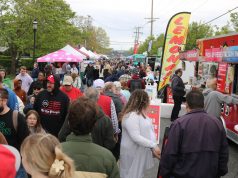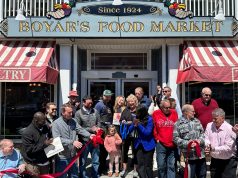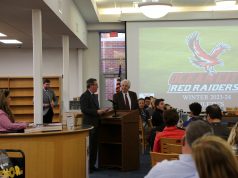Michael Rashid has worked extensively with urban planning departments in several US cities and below he discusses how the most successful programs can create a truly innovative city or breathe new life into long-established spaces.
Michael Rashid says it can be purely transformative or inspiringly reinvigorating. Urban planning can confidently look toward the future with a unique vision that makes an impact for centuries. Successful development of this kind of program showcases how a city can best integrate into its environment, not dominate it.
The process is complex, but there are several key concepts that are usually part of every project.
Strategic Urban Planning
Urban planning is often part of a city or metropolitan area’s overall strategic plan, a comprehensive approach to a city’s look and growth that reflects an area’s specific goals, whether centered on business development, overall way of life for citizens, or sustainable infrastructure.
Michael Rashid explains that such goals reflect financial investment or limitations but often come from direct approval from citizens (often through bond investment voting) or local governments. Strategic planning not only rethinks a present urban plan but plans for the future, especially when it comes to ecologically sound infrastructure and equity and efficiency within urban contexts.
• Land-Use Planning
The way an urban center or metropolitan area can use land is typically governed by strict statutes, rules, or codes that dictate what different types of land can be used for. Michael Rashid says that land may be reserved for certain purposes such as residential or commercial, industrial uses, or for municipal structures.
These land-use codes are integral to urban planning. Planners consult with numerous members of the community and government officials to ensure that a plan reflects and follows land-usage governance.
• Sustainable Development and Environmental Planning
Centuries ago, the environmental impact of urbanization was not a factor in the layouts of burgeoning towns. Cities grew as need dictated. Population growth wasn’t really considered and preserving nature was rarely a concern, explains Michael Rashid. Cities were even built right at sea level without protections in place.
That is mostly a thing of the past. Now, urban planners are often selected because they have innovative and vital environmental considerations as part of an overall urban plan. This can often include integration of green spaces and preservation of natural spaces, but also buildings designated as “green,” spaces that take advantage of solar power, and a city that goes to great lengths to diminish its overall carbon footprint.
Economic Development and Urban Revitalization
Michael Rashid reports that many large urban areas have sections that are in decline, whether through crumbling infrastructure or because of decades of economic depression. Many urban planners have goals of city revitalization, pinpointing the causes of decline, but also actual solutions, such as repairing streets, adding parks, and rethinking public spaces to attract business or tourism.
• Master Planning
Tying everything together in one big urban plan is considered master planning. Master planning is commonly used when a city is considered how best to use swaths of undeveloped land. Basically, a town is starting from scratch.
Under this concept, urban planners must think of the future and what’s best for the longevity of a certain area and its citizens. It considers both commercial and residential needs, but also specific such as road locations and urban amenities, such as parks and schools. Under this concept, urban planners must work closely with government agencies, landowners, and an area’s citizens.
• Hybrid Urban Planning
While development plans of the past often centered on uniformity, providing equity for citizens as far as facilities and support, hybrid or mixed urban planning is now increasingly popular and sometimes the default for many metro areas around the world says Michael Rashid.
While a city’s neighborhoods and public buildings receive individual attention, they are often included in an overall master plan that reflects the needs and function of the entire urban area. Certain areas may have different looks and patterns than other sections of cities but overall infrastructural support is also considered.
• Culture-Based Urban Planning
Michael Rashid explains that while many larger cities mirror each other as far as infrastructure, services, and citizen support. But most cities also attempt to forge a new identity and reflect uniqueness through urban planning.
Such culture-based considerations are designed to showcase and preserve an area’s distinct ethos and offerings, reflecting attractive and different ways of life. Much of culture-based urban planning is also value-driven, featuring prominently a city’s environmental, social, and other commitments, Michael Rashid reports.
The Bottom Line
Urban planning has been employed for thousands of years, with some general concepts remaining the same and new concepts gradually taking hold and reflective of changing times and needs. Today’s urban planning is often a balancing act, integrating concepts that reflect general yet vital needs but also incorporate the innovative and unique desires of citizens.







